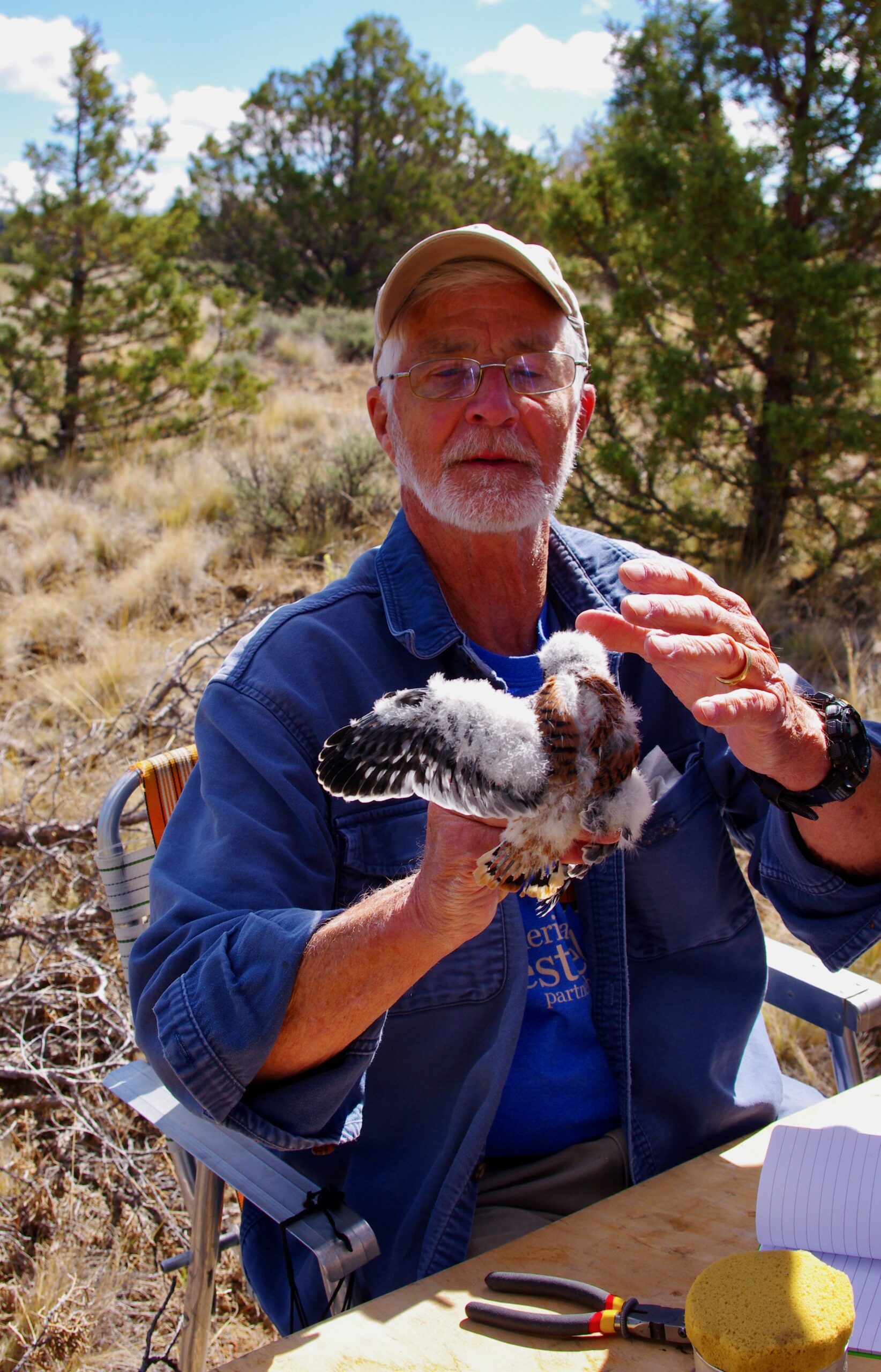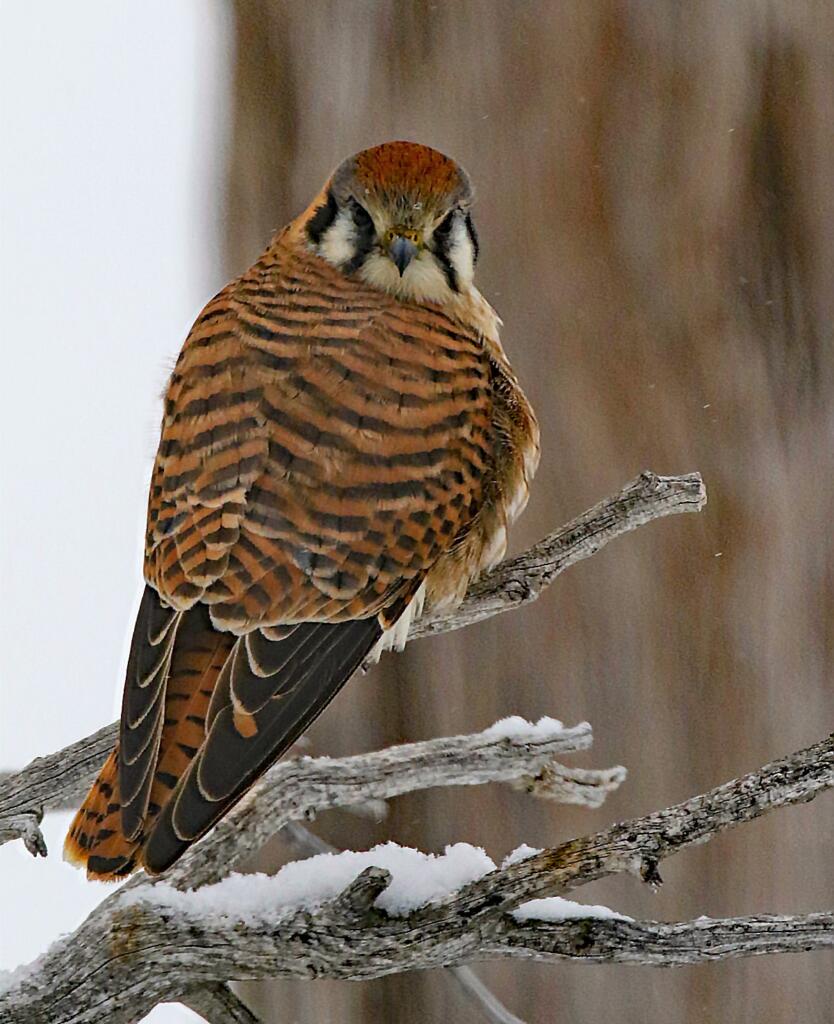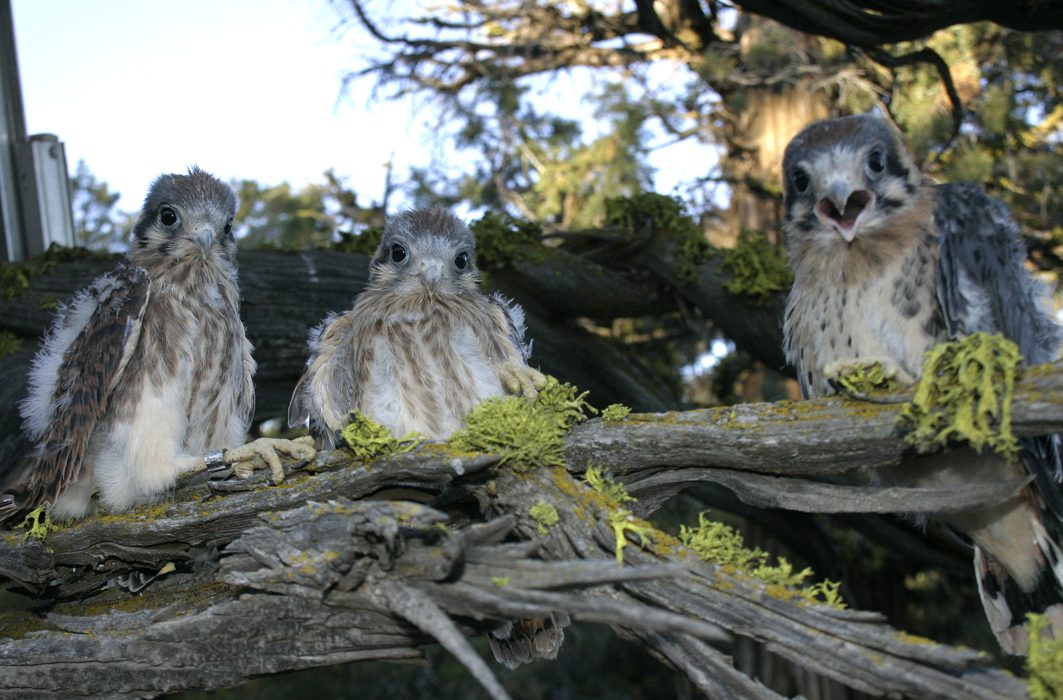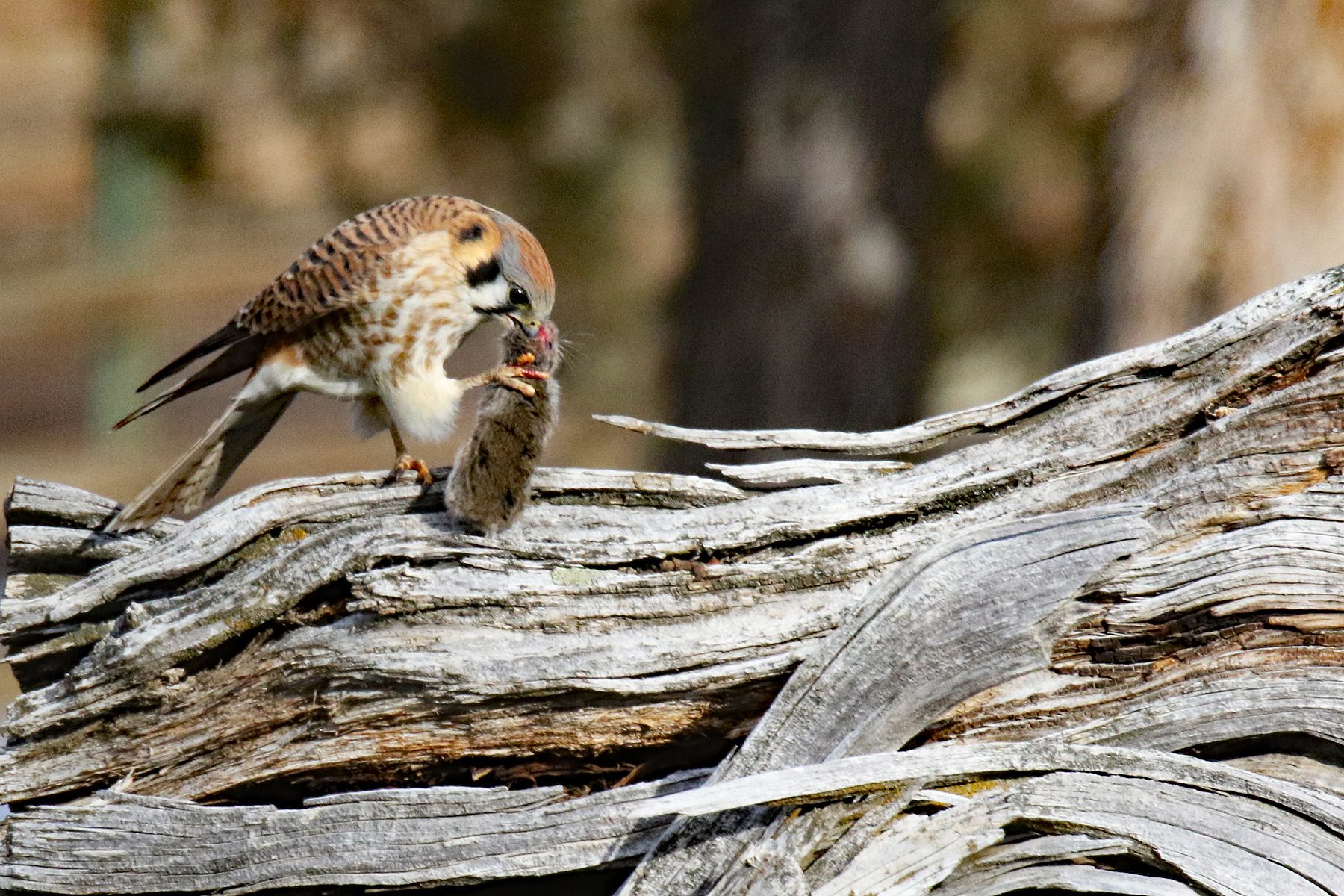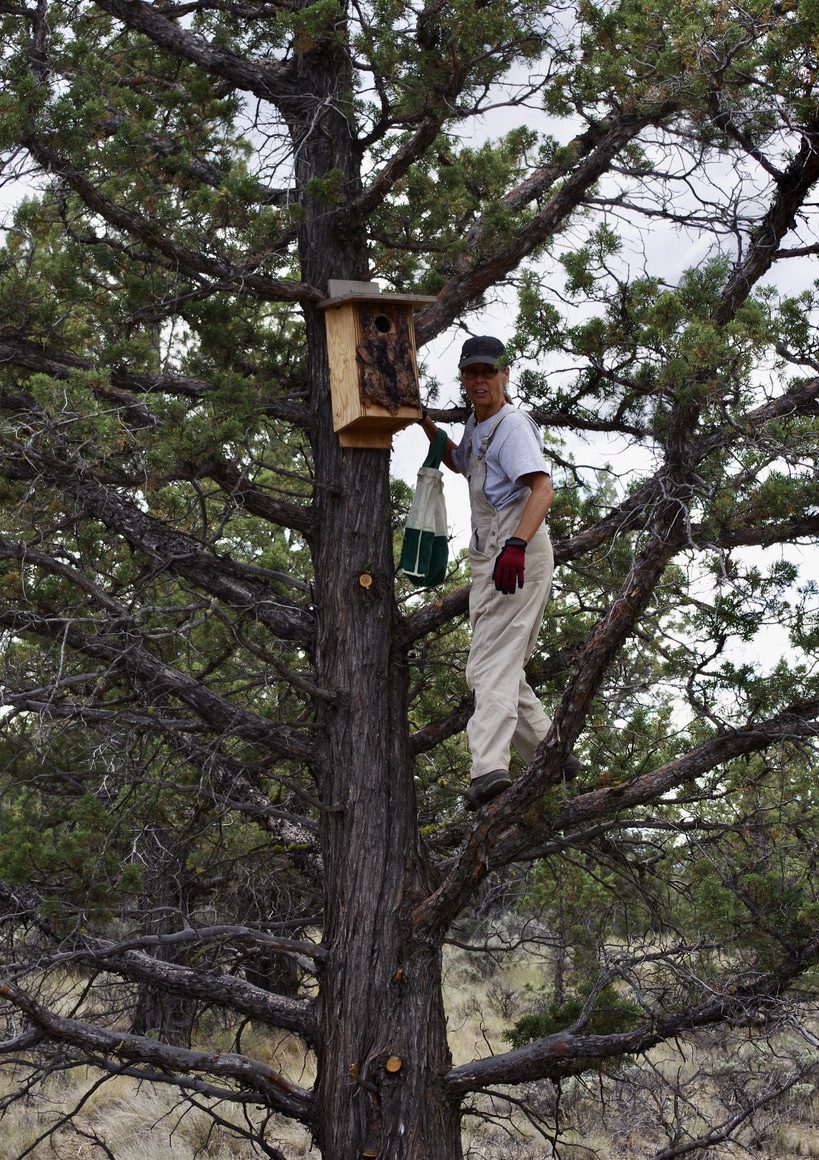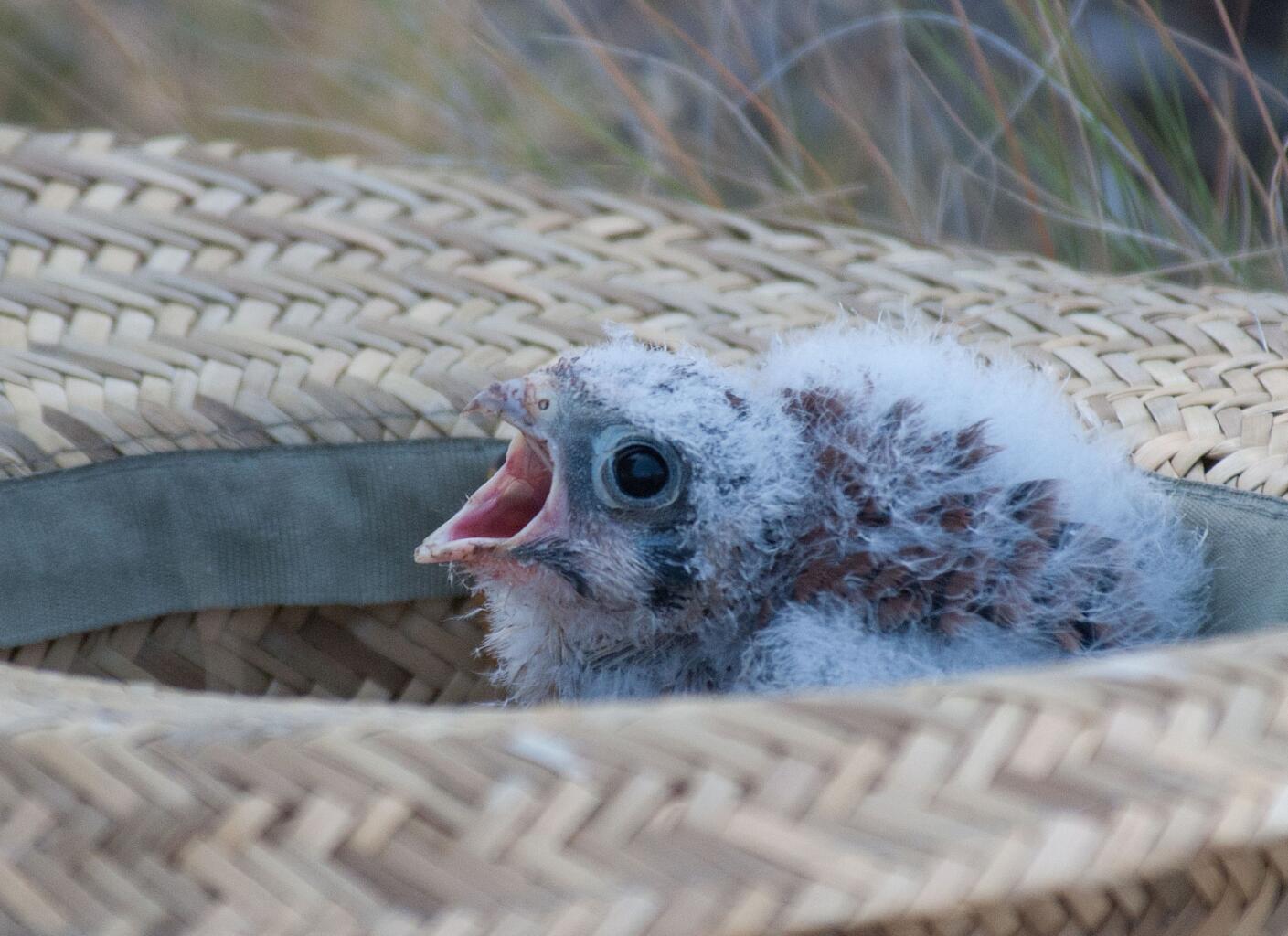Project Description
Beginning with one nest box fledging five American Kestrels (Falco sparverius) in 1988, Don McCartney led the growth of this Central Oregon Kestrel Nest Box Trail into one of the largest and most successful information gathering projects of its kind in North America. This year, 2024, is the 27th year for this project staffed primarily by ECAS volunteers which includes not only monitoring but also the construction of nest boxes. Our licensed bander, Ken Hashagen puts in many hours banding the kestrel chicks when they are ready. Don reports that there are now 151 nest boxes spread over three counties including a very productive nest box near John Day.
Why We Do This and What We Have Learned
Researchers with this project have learned that warm weather in May and June leads to greater survival of young kestrels due to greater prey availability. They eat mostly insects and small rodents, both of which are more active in warmer spring weather.
The valuable data gathered by Don from these field volunteers is organized and reported to the Peregrine Fund’s American Kestrel Partnership in Boise, ID and is used in their national database. They report that the kestrel population trends positive for the Deschutes and Madras survey counts, contrasting with most of the rest of Oregon which trends negative.
What Volunteers Do
A small group of about fifteen (with couples counting as one) volunteers monitor the nest boxes during nesting season.
Project Focus Areas
- Population Monitoring
- Bird Conservation
Would You Like to Volunteer?
As this is a carefully regulated activity with standards set by wildlife biologists, the group of volunteers is well-trained and mostly stable from year to year. This means that opportunities for volunteers are rare, but you can participate by keeping your eyes open for banded kestrels!
-

Ken Hashagen bands a bird for the Kestrel Nest Box Project.
(Diana Roberts) -

American Kestrel
Photo Courtesy of Harry Johnson -

American Kestrel young
(Jim Anderson) -

American Kestrel
(Harry Johnson) -

Volunteer Marilynne Keyser inspects a nest box for the Kestrel Nest Box Project.
(Diana Roberts) -

Banding a young Kestrel in Crooked River Ranch.
(Kevin Smith)
Project Reports and Information
Other Projects
- Bluebird Nest Box Project
- Cabin Lake Bird Blind
- Deschutes Land Trust / ECAS Bird Surveys
- Don and Lowell Franks Nest Box Project
- Geographic Information Systems (GIS) Project Support
- Golden Eagle Nest Camera on Whychus Creek
- Greater Sage-Grouse Project
- Green Ridge Raptor Survey
- Highway Osprey Nest Monitoring
- Lake Abert Coalition Bird Survey
- Pinyon Jay Study
- Summer Lake Shorebird Survey
- Vaux’s Swift Migration Survey
- Whiskey Springs Restoration
- Winter Raptor Surveys

